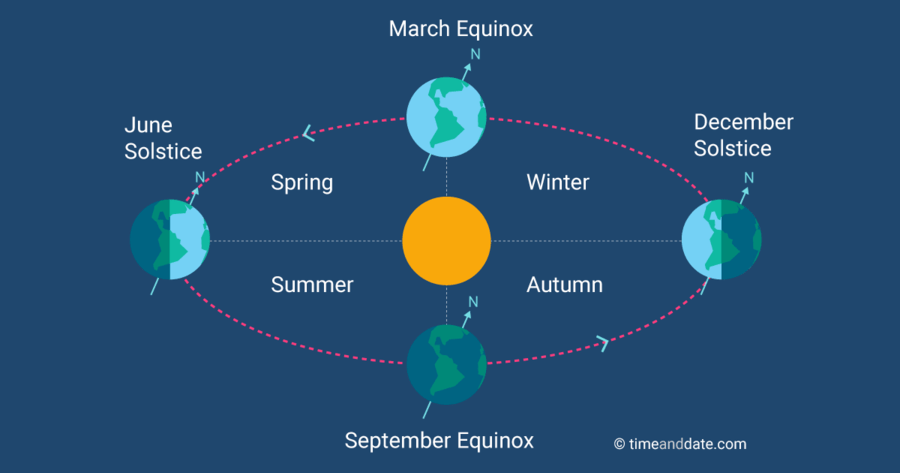Home > Sections > Specials > Equinoxes
Equinoxes

Keywords
Equinox, spring, autumn, longest day, shortest day, vernal, solar declination, tropic, cancer, capricorn, equator.
Introduction
During the year, there are two equinoxes. They denote that spring has arrived, and also that autumn has arrived. But what do they actually mean?
First, What is an Equinox?
An equinox is a phenomenon that occurs when both the Northern and Southern hemisphere experience very similar amounts of daytime and nighttime. For technical terms, it is when a planet's subsolar point passes through it's equator.
Earth has two equinoxes. Depending on where you are in the world, they can be either the spring equinox or the autumnal equinox. They are opposite if you are in one hemisphere to the other. So, for example, if you are in the UK, and you have the autumnal equinox, being in the Northern hemisphere, if you were to be in Australia, you would be experiencing the spring equinox instead.
Solar Declination
Expand the words in the heading. Solar = Sun. So this is to do with the Sun. Declination. That's a bit trickier. This means a decline. Well, it doesn't mean a decline in the amount of sunshine, but what it does mean is that the Sun is positioned as close to the equator line as it can get.
This then means that there is equal amounts of sunshine all across the planet for the length of time during the daytime. This also means that nighttime is standardised and is the same amount of time.
As the seasons change, the Sun's position over the equator moves, depending on the position of the Earth in relation. This is due to the tilt of the axis. At both the spring and autumnal equinoxes, we all get equal amounts of sunshine. But during the summer solstice, when the sun energy is warmest, the Nothern hemisphere gets most of the sunlight. The opposite is true in the winter, and the Southern hemisphere gets most of the sunlight.
Here is a YouTube video from National Geographic to explain equinoxes:
The Role of the Tropics
So, as we move from the Spring Equinox in March, by the time we hit June (specifically the 21st), the subsolar point has moved away from the equator, and has reached the Tropic of Cancer (23.5° North). This is the summer solstice point.
Interesting fact: during the Autumnal equinox, we see a full moon. This is sometimes referred to as the Harvest Moon, and is visible earlier in the evening, which gives farmers more time and light to harvest their crops.
The same happens after the Autumnal equinox is September. By December (specifically the 21st), the subsolar point has reached the Tropic of Capricorn (23.5° South). This is the winter solstice point.
On June 21st, it is commonly known as the longest day of the year. This is because, at least from our perspective, it is the longest time we see daylight. Equally, on December 21st, it is known as the shortest day, as it is the shortest time we see daylight. After both these days, we either begin to see nightime pull in, or daytime extend.




 Earth Rotation
Earth Rotation Earth
Earth

